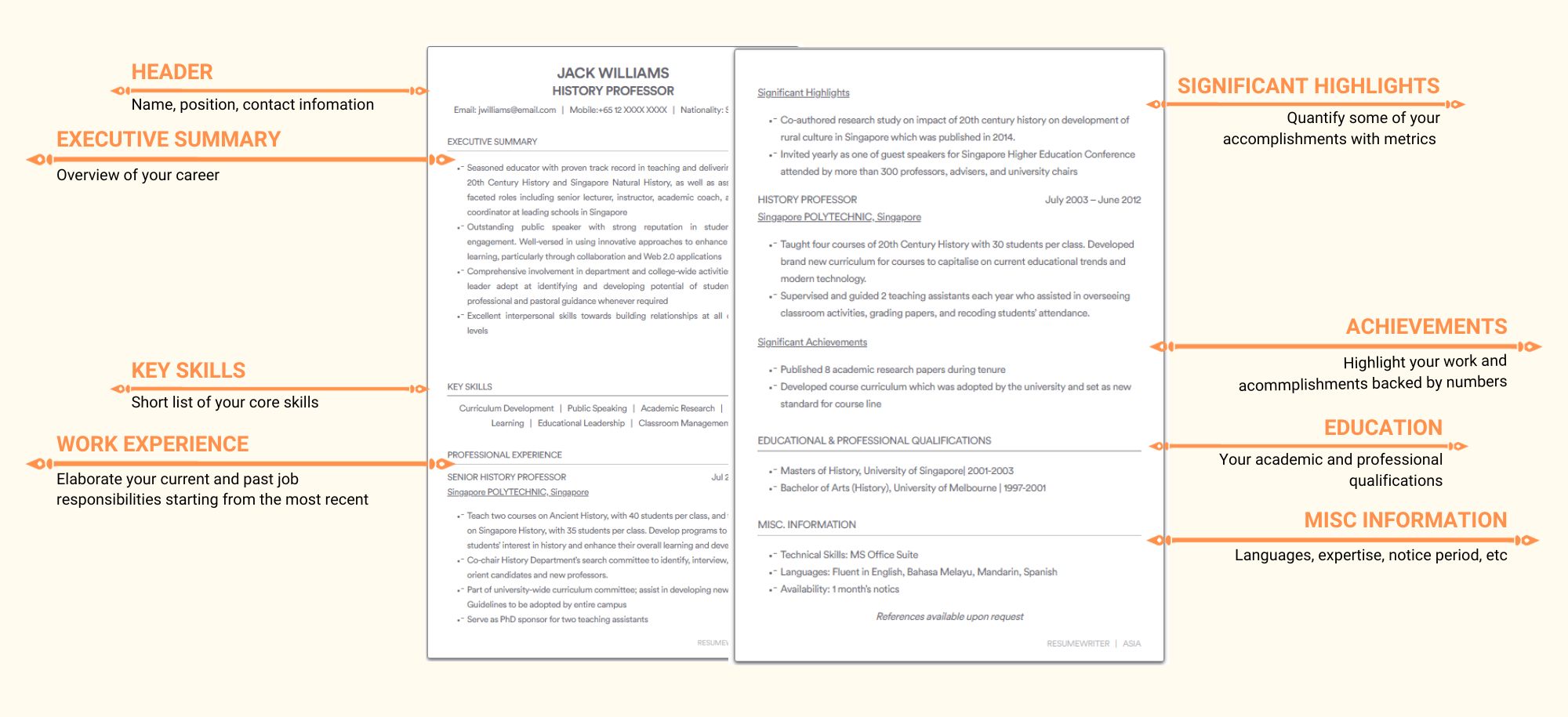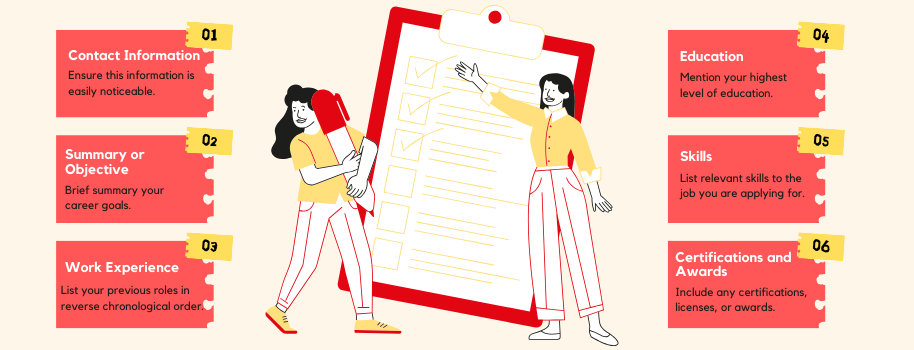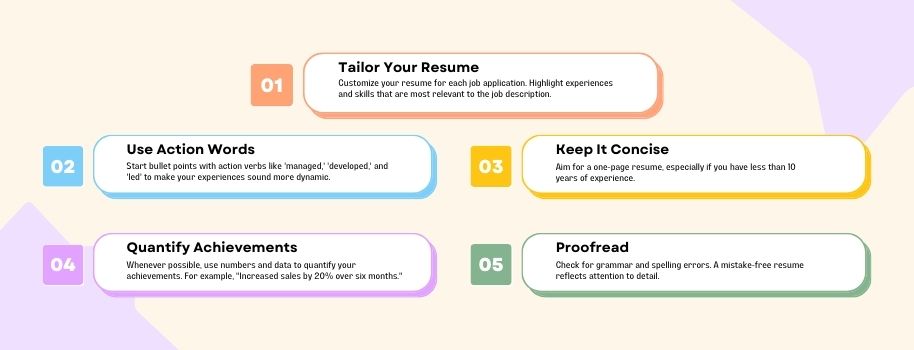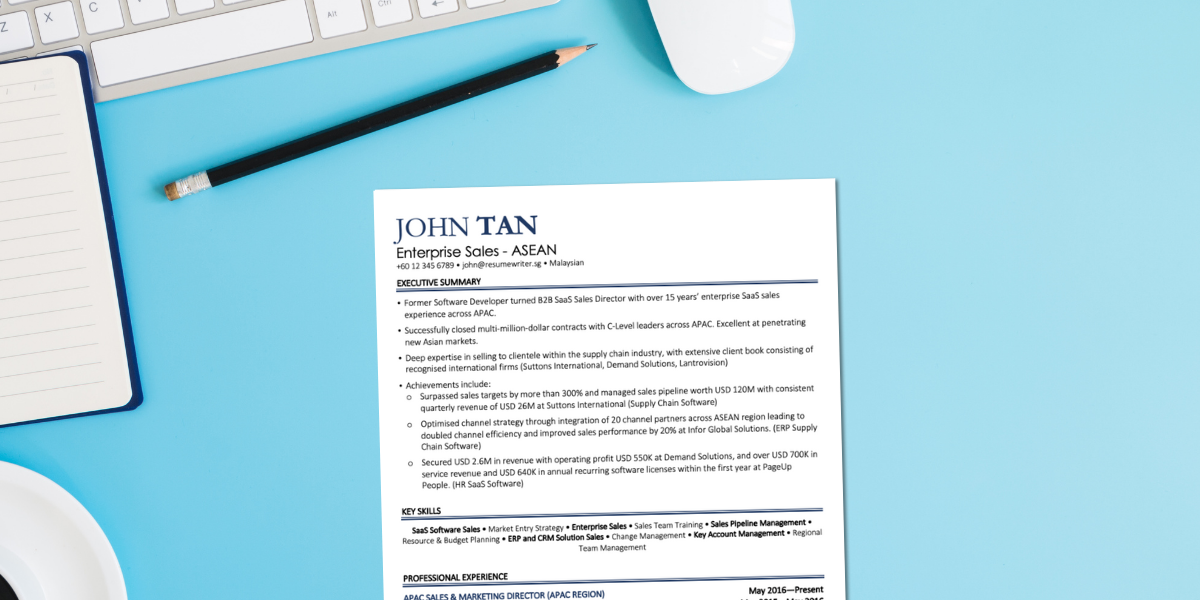50+ Resume Samples | Downloadable Resume & CV Samples (2024)
Scroll down below to get 50+ expertly crafted resume samples. Tailored to various industries and roles, our downloadable samples are the perfect resume help designed to showcase your skills and experiences in the most impactful way.
Accounting & Audit Resume Samples
Banking & Finance Resume Samples
- Banking Resume Sample (Banking Director)
- Finance Manager Resume Sample
- Investment Analyst Resume Sample (Banking and Venture Capital Analyst)
- Relationship Manager Resume Sample
- Risk Manager Resume Sample
- Banking Sales Resume Sample
- IT Resume Sample (for Banking Industry)
- Compliance Manager Resume Sample
Education Resume Samples
- Teacher Resume Sample
- Professor Resume Sample
- Researcher Resume Sample (Research & Development)
Engineering Resume Samples
HR, Admin, & Operations Resume Samples
Hospitality Resume Samples
IT Resume Samples
- IT Manager Resume Sample
- IT Resume Sample (for Banking Industry)
- IT Project Manager Resume Sample
- SaaS Business Development Manager Resume Sample
- Web Developer Resume Sample
- Digital Marketing Resume Sampl
- Data Analyst Resume Sample
- Software Engineer Resume Sample
- Data Scientist Resume Sample
- Cybersecurity Resume Sample
- Digital Product Owner Resume Sample
Sales & Advertising Resume Samples
- Sales Manager Resume Sample
- Sales Director / Senior Sales Executive Resume Sample
- Account Manager Resume Sample
- Advertising Resume Sample
- Insurance Sales Resume Sample
- Telecom Sales Resume Sample
- Sales Associate Resume Sample
- Sales Account Manager Resume Sample
- Banking Sales Resume Sample
- PPC Manager Resume Sample
Student & Fresh Grad Resume Samples
Frequently Asked Questions (FAQ) about our Resume Samples
-
As a company that has drafted thousands of resumes over the years, we recommend that you have the following sections as part of your resume: An Executive Summary, A List of Your Key Skills and Areas of Expertise, Work Experience and Achievements at Work, Technical Skills, Notice Period and Languages. You can also include Personal Projects, Volunteer Experiences, Conferences and Publications.
-
One of the key things that employers look for when scanning your resume is your achievements and accomplishments. You don’t need to be a professional resume writer to get noticed. This is why it’s good to include numbers and dates, as it enables them to pinpoint your successes quickly and easily.
-
Our Resume Writing Consultants recommend a 2 or 3 page resume for mid-career and senior-career jobseekers. A 1-2 page resume may be fine if you’re early on in your career, though.
-
We have a whole guide on the best resume formats, but if you’re in a rush then we recommend that you opt for a reverse chronological or functional resume format.
-
Absolutely! Check out our list of 10+ Resume Templates here. They are ATS-optimized, modern and designed in line with our signature ResumeWriter format. When you’re done writing your CV with our templates, don’t forget to send your CV to us for a Free CV Feedback session with our team of HR Experts!
How To Write Your Resume
Writing a resume can often feel like a daunting task, especially when you’re trying to make an impression on potential employers. In this comprehensive guide, we will delve into the essential aspects of crafting an effective resume, including how to use resume samples, key elements to include, best writing tips, ways to get noticed by Singaporean HR managers, and whether or not to use resume samples or templates.
Key Elements of a Resume
Contact Information
- Visibility: Ensure your contact information is placed at the top of your resume and is easily visible. This helps potential employers quickly identify how to reach you.
- Details to Include: Your full name, a professional email address, a contact phone number, and, optionally, your LinkedIn profile URL. If you have a professional website or online portfolio, consider including these as well.
- Formatting: Use a larger font size for your name to make it stand out. Keep the rest of the information in a standard, readable font.
Professional Summary or Objective
- Purpose: This section serves as your elevator pitch. It should capture the essence of your professional background and what you can offer.
- Writing a Summary: If you have several years of experience, a professional summary is more appropriate. It should briefly highlight your career achievements and critical skills.
- Writing an Objective: For those early in their careers or making a career change, an objective statement can be more effective. This should state your career goals and what you aim to achieve in the position you’re applying for.
- Customization: Tailor this section to align with the specific job you’re applying for, using keywords from the job description.
Work Experience
- Chronological Listing: Start with your most recent position and work backward. This format is preferred as it shows your career progression.
- Details to Include: For each position, list your job title, the company’s name, location, and the dates of your employment.
- Achievements and Responsibilities: Use bullet points to detail your key responsibilities and achievements in each role. Focus on results and accomplishments rather than just listing duties.
- Quantification: Where possible, quantify your achievements with numbers, percentages, or specific outcomes to provide a clearer picture of your impact.
Education
- Information to Include: Your most recent or highest level of education should be listed first. Include the name of the institution, the degree you obtained, and the graduation year.
- Additional Details: If relevant, you can also include your major/minor fields, notable academic achievements, and GPA (if impressive and recent).
- Continuing Education: If you have taken courses relevant to the job after your formal education, include these as well.
Skills
- Relevance: Focus on skills that are most relevant to the job you’re applying for. Read the job description carefully to identify which skills the employer values.
- Categorization: Separate your skills into categories, such as technical skills, languages, and interpersonal skills.
- Specificity: Be as specific as possible, especially with technical skills. For example, instead of just listing “project management,” specify the methodologies or tools you’re experienced with, like Agile or Trello.
Certifications and Awards
- Professional Certifications: Include any relevant professional certifications that enhance your qualifications for the job. State the name of the certificate and the awarding organization.
- Awards and Honors: Mention any awards or recognitions you’ve received that are relevant to your career or the job you’re applying for.
- Recent and Relevant: Focus on certifications and awards that are recent and closely related to the position or industry.
Best Resume Writing Tips
1. Tailor Your Resume
- Understanding the Job Description: Carefully read the job listing to identify key skills and experiences the employer is seeking. Look for specific keywords and phrases that are emphasized.
- Matching Your Skills and Experiences: Align your resume with these keywords and phrases. For example, if the job requires leadership skills, highlight any leadership roles or responsibilities you’ve held.
- Customization for Each Application: Avoid sending a generic resume to multiple employers. Each job might require a different set of skills or experiences, so your resume should be customized accordingly.
2. Use Action Words
- Creating Impact with Verbs: Using strong action verbs at the beginning of your bullet points makes your resume more compelling. Instead of saying “responsible for,” use verbs like “orchestrated,” “spearheaded,” or “executed.”
- Variety and Relevance: Use a variety of action words that are relevant to your field or industry. This not only adds dynamism to your resume but also shows your versatility and adaptability.
- Examples:
- Instead of “Worked on project management,” say, “Directed a team of 10 in a successful project delivery.”
- Replace “Helped in sales increase” with “Catalyzed a 30% growth in sales over three months.”
3. Quantify Achievements
- Using Numbers and Data: Quantifying achievements gives a tangible measure of your impact. This can include percentages, dollar amounts, timeframes, or any other relevant metrics.
- Contextualizing Your Contributions: It helps to provide context for your achievements. For example, “Managed a budget of $50,000” is more impressive if you add “while reducing costs by 15%.”
- Making Your Achievements Stand Out: Quantified achievements often stand out more in the hiring manager’s mind, as they provide clear evidence of your effectiveness.
4. Keep It Concise
- One-Page Rule: For those with less than 10 years of experience, a one-page resume is usually sufficient. This forces you only to include the most relevant and impactful information.
- Relevance Over Quantity: Focus on quality, not quantity. Highlight experiences and skills that align most closely with the job you’re applying for.
- Effective Use of Space: Use bullet points, concise language, and good formatting to make the best use of space. Avoid lengthy paragraphs and unnecessary details.
5. Proofread
- Attention to Detail: Proofreading your resume is crucial. Even minor typos can create an unfavorable impression.
- Getting a Second Opinion: Sometimes, it’s hard to spot your own errors. Ask a friend or a mentor to review your resume. They might also provide valuable feedback on the content.
- Consistency in Formatting: Check for consistency in formatting – this includes font sizes, bullet point styles, and alignment. A consistent format enhances readability and professionalism.
By adhering to these detailed tips, you can significantly enhance the quality of your resume, making it more appealing to potential employers and increasing your chances of landing your desired job.
How to Get Noticed by Singaporean HR Managers
Cultural Nuance: Understand the work culture in Singapore. Professionalism and formality are highly valued.
Highlight Relevant Experience: Emphasize experiences that are particularly relevant to the Singaporean market, such as knowledge of local industries or language skills.
Adapt to Local Standards: Singaporean resumes often include a passport-sized photo and personal details like date of birth, which might be rare in other countries.
Networking: Leverage LinkedIn and other professional networks to connect with industry professionals in Singapore.
How to Use Resume Samples Page
Understanding Resume Samples: Resume samples are templates or examples that showcase different styles and formats of resumes. These samples can serve as a valuable reference point, especially if you need help figuring out where to start.
Downloading Resume Samples: Our website offers resume samples that allow you to download them for free. Choose a sample that aligns with your industry and experience level.
Customizing the Sample: After downloading a resume sample, the next step is to customize it. Replace the placeholder information with your own details. Ensure that you tailor it to reflect your unique experiences, skills, and accomplishments.
Analyzing the Format: Pay attention to the layout, font, and structure of the sample. These elements are critical in ensuring your resume is easy to read and professionally presented.
Should You Use Resume Samples?
Advantages: |
Disadvantages: |
Best Practices: |
|
|
|
|
|
|
Crafting an effective resume requires a balance between following proven structures and showcasing your unique qualifications.
By utilizing resume samples wisely, tailoring your content, and understanding the specific requirements of your target job market (like Singapore), you can create a resume that stands out.
Remember, your resume is more than just a document; it’s a reflection of your professional journey and a tool to open doors to new opportunities.






